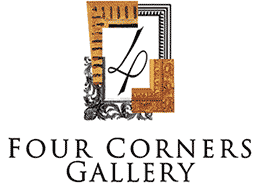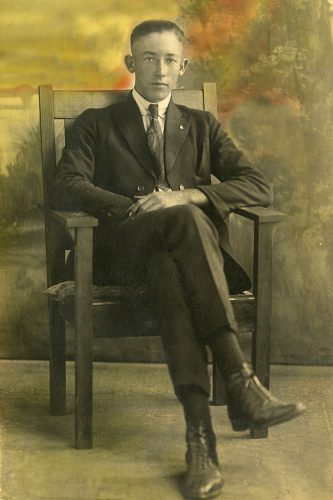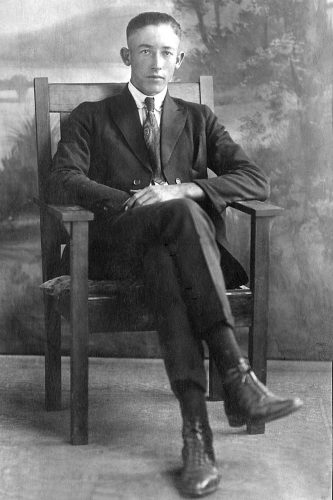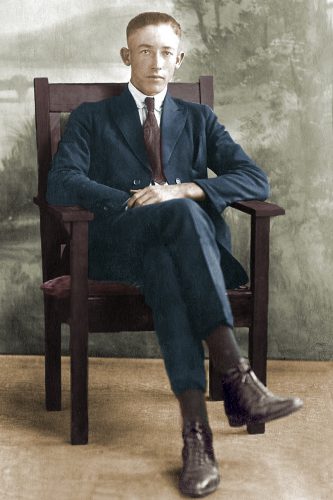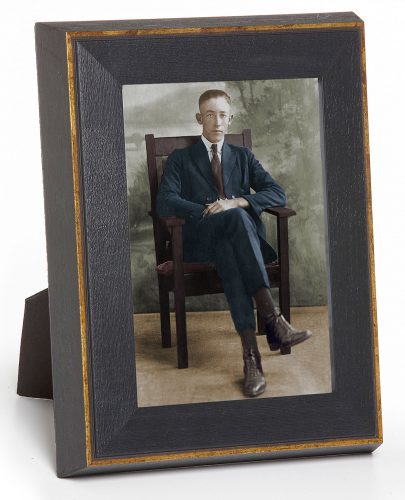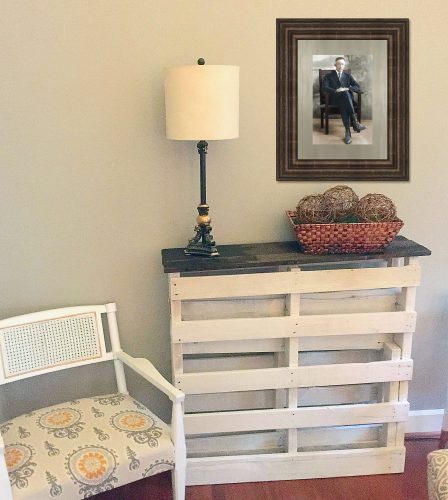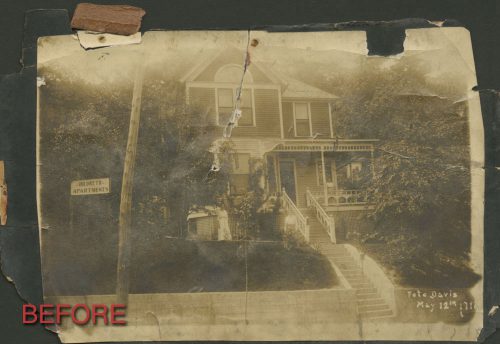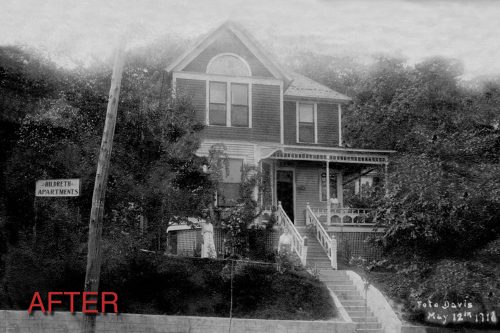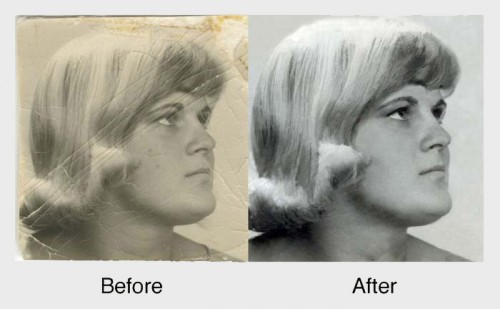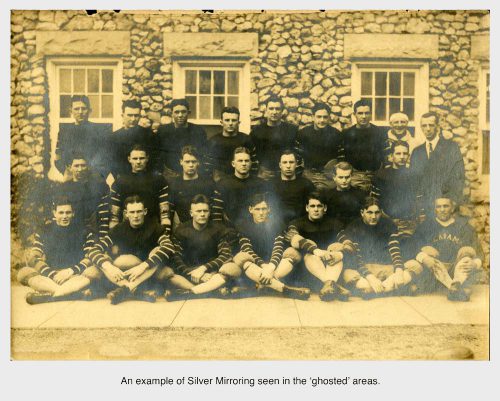One of our specialties at Four Corners Gallery is fine art restoration for your sentimental pieces on paper. While we can do this digitally through our Photo Restoration services, it’s not your only option. The inherent nature of an original is better served by being properly treated and repaired rather than reproduced when possible. Restoration can be stunningly transformative in returning a piece to the initial beauty of its creation.
Poor environmental conditions, inferior or non-conservation framing materials, mishandling, and a variety of mishaps are some reasons damage can occur. These problems detract from both your enjoyment of the piece and its value. We work closely with professional paper conservators who will clean, flatten, remove tape and adhesive residue, patch and stabilize tears, and replace missing pigment and paper. Not only will your restored work look nicer, it will also be conserved, halting further damage that may occur as a result of the paper’s natural properties. Additionally, restoration can return value lost from damage that keeps it from being considered in mint condition.
No matter how obscure or damaged, don’t give up on your piece. Check out our website for a complete list of damage that we commonly see and can remedy.
Below are some examples of works we have been privileged to assist our clients in restoring.
Picasso
Clearly, a Picasso can hold quite a bit of value.

This collector wanted to maintain their investment in this lithograph which had been damaged by the use of non-conservation framing materials, including regular glass. The original, acidic, paper matboard and cardboard backing added to the darkening in the form of acid burn. Poor mounting tape selection left behind residue. The use of a non uv-filtering glass caused the paper to lighten in the area not covered by the matting.

After a stint with the paper conservator the contrast from before to after is quite remarkable.
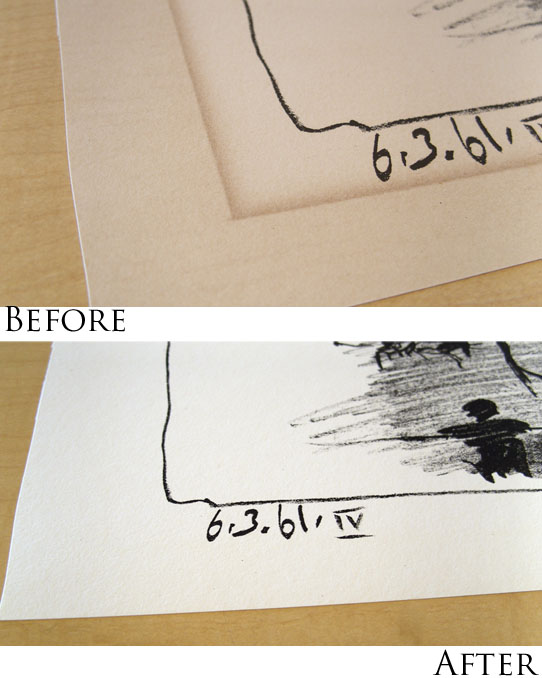
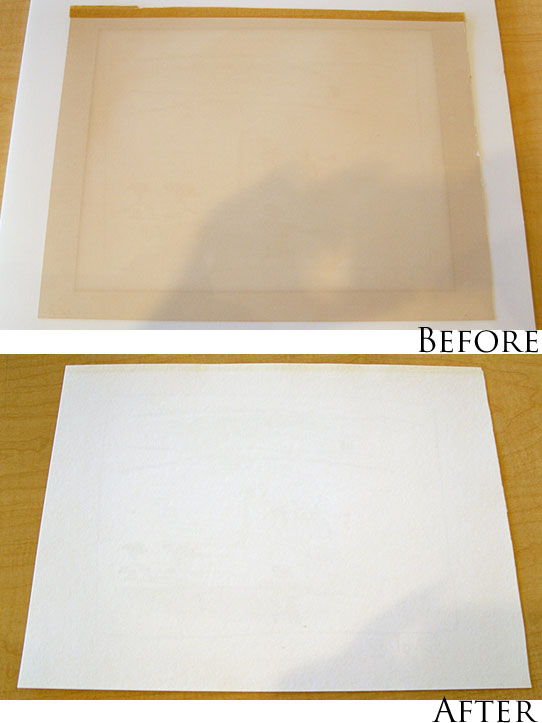
The Goal Line Stand by Daniel Moore
Our client was thrilled to uncover a 1979 Sugar Bowl limited edition print by the famous Daniel Moore at a garage sale. Unfortunately, there was extensive damage. The conservators were not only able to rid the artwork of the stains and water damage but also repair the tears.

Golden Gate Bridge Watercolor
This watercolor of the Golden Gate Bridge held quite a bit of sentimental value for our client. So, when a storm caused extensive damage to their home, it was imperative this very special piece be restored.

As you can see, water, dirt and mold stained the edges and broken glass punctured holes into the center.

While a bit of staining remains after the restoration, the mold was eradicated and the punctures were flattened and essentially eliminated. There are occasions, like this one, when a “bath” cleaning cannot be performed because there’s too much risk to sensitive ink or paint that may run or wash away.

Parting Day
This etching is a great example of the power of paper restoration. Many years ago frames were backed with wooden panels which we now know to be extremely acidic. When we removed the backing we discovered extensive damage to the paper: severe acid burn, a large tear, and foxing (unsightly brown spots caused by corroding particles). This etching is a Chine-collé which means it was printed on a thin tissue and mounted to a larger piece of thicker paper. In order to properly clean and restore the work, the tissue was lifted from the backing paper, both layers were cleaned, and the tissue was remounted.

,Below you can see the astounding difference a cleaning and restoration can make.
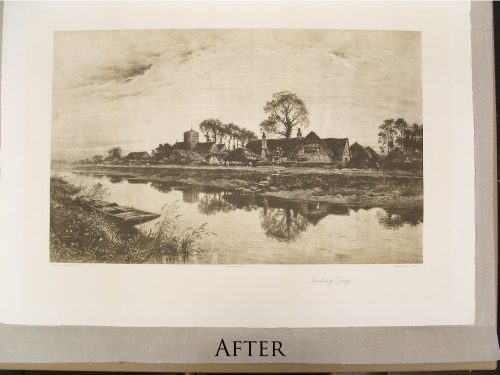
Has a special piece you own been damaged? Please contact us to discuss your options and allow us to assist you in bringing your work back to its former glory.
